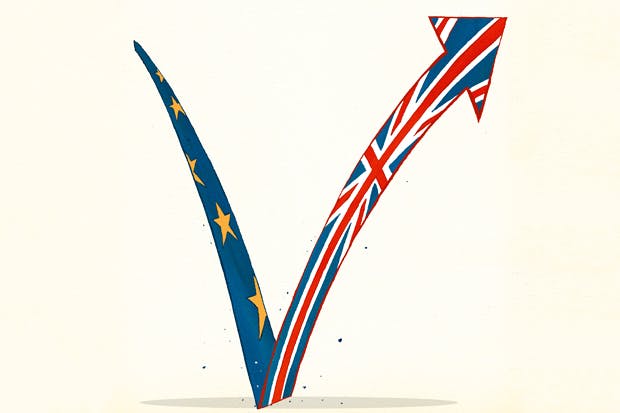We are now just two months away from the second anniversary of the Brexit vote and therefore in a position to judge the apocalyptic forecast made by the Treasury in May 2016 in the run-up to the vote. In a paper signed off by George Osborne, which neither the former chancellor nor anyone else who has made a grim prognosis for Britain’s departure from the EU should be allowed to forget, the finest minds in the Treasury came up with two scenarios for the aftermath of a vote to leave the EU. In the ‘shock’ scenario, GDP would be 3.6 per cent lower after two years (compared with if the country had voted to remain), the pound would fall by 12 per cent and unemployment would rise by 520,000. In the ‘severe shock’ scenario GDP would be six per cent lower, the pound would fall by 15 per cent and unemployment would rise by 820,000. But even this could prove to be optimistic, the authors claimed, adding:
“There are significant downside risks which imply that the impact could be even larger”.
How are we getting on? A slew of data released this morning shows just how wide of the mark these predictions were. As for GDP, it is now 3.3 per cent higher than it was this time two years ago. I appreciate that the Treasury’s forecast for shrinkage of 3.6 to 6.0 per cent was relative to what GDP would have been had we voted to remain – something we cannot possibly know. Nevertheless, for the Treasury forecast to have been correct the economy would have had to grow by between 6.9 per cent and 9.3 per cent in the two years following a remain vote – something which is highly improbable as it would have way outstripped economic growth in recent times.

As for the predictions for the pound, the Treasury didn’t actually give a reference currency for its prediction of a fall, but let’s take the dollar. The pound did fall sharply after the referendum but has since staged a strong recovery, especially this year when it has grown by eight per cent against the dollar. On 23 June 2016, while the country was voting, the pound peaked at $1.49. This morning it was at 1.437, which is 3.5 per cent lower. Referendum day saw a spike in the pound, however. Two years ago today the dollar was actually a little lower against the pound than it is today. Against the Euro there has been a decline in the pound. On 23 June 2016, it was 1.31 Euros, compared with 1.157 Euros this morning – a fall of 11.6 per cent. As against the dollar, however, there was a spike on 23 June 2016 (possibly when the result was expected to go the other way). Over exactly two years the decline has been 9.5 per cent.

On unemployment, the gulf between the Treasury’s forecast and the actual out-turn has been astonishing. In June 2016, the unemployment rate was 4.9 per cent, and the number of people in work 31.7 million. Figures released today show the unemployment rate at 4.2 per cent – the lowest since 1975. The employment rate, at 75.4 per cent is the highest ever recorded. The number of people in work is 32.26 million – over half a million more than in June 2016. So much for job losses.
Some Remainers continue to bleat that the referendum was ‘stolen’ by a Leave campaign which told lies and misused data. Yet again the Today programme covered the Cambridge Analytica story this morning. But isn’t it a far bigger scandal how the Treasury sought to bounce the country into a Remain vote by publishing (just before the official campaign began and government departments had to fall silent) an apocalyptic prediction which has proved so unfounded? George Osborne set up the Office for Budgetary Responsibility supposedly to take the Treasury out of the role of economic prediction. But then, when it suited him, used its full muscle to pump out what increasingly looks like a piece of campaigning propaganda. But for some reason this story hasn’t yet reached the Guardian, the BBC, the FT – and least of all the Evening Standard.







Comments